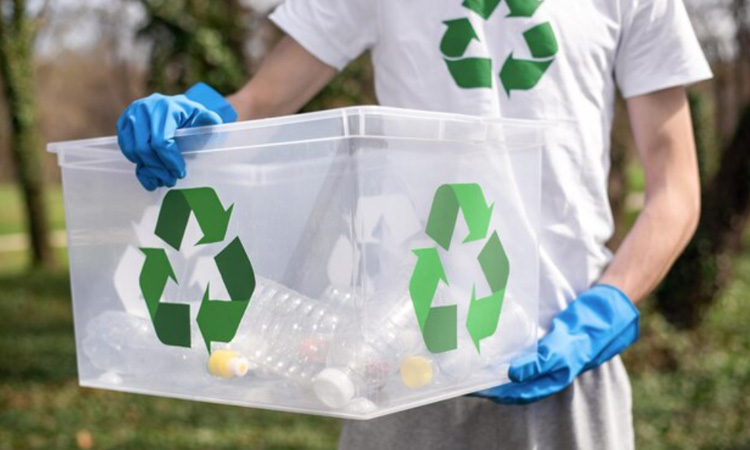The world is waking up to the environmental toll of plastic production and consumption, prompting a paradigm shift toward sustainable practices. The circular economy emerges as a beacon of hope, offering a transformative approach to the life cycle of plastics. In this article, we explore the principles of the circular economy and its pivotal role in fostering the sustainable development of plastics.
Understanding the Linear vs. Circular Economy
- Linear Economy: A Recipe for Waste
The traditional linear economy follows a “take, make, dispose” model, where resources are extracted, products manufactured, used briefly, and then discarded as waste. In the context of plastics, this linear approach has led to environmental degradation, overflowing landfills, and ocean pollution.
- Circular Economy: Closing the Loop
The circular economy, on the other hand, envisions a closed-loop system where resources are continuously reused, recycled, and repurposed. Plastics, as valuable materials, can be part of this circular loop, mitigating environmental impact and contributing to sustainable development. Understanding the key principles of the circular economy lays the foundation for a more responsible approach to plastic use.
Principles of the Circular Economy
- Designing for Longevity and Recyclability
In a circular economy, products are designed with durability and recyclability in mind. This principle seeks to extend the lifespan of products and ensure that they can be efficiently disassembled and recycled at the end of their use.
- Promoting Recycling and Reuse
Central to the circular economy is the promotion of recycling and reuse. Plastics, when recycled, can be transformed into new products, reducing the demand for virgin plastic production. Exploring innovative recycling technologies and encouraging consumer participation are essential components of this principle.
- Reducing Single-Use Plastics
The circular economy aims to minimize the use of single-use plastics, which contribute significantly to environmental pollution. Shifting towards reusable alternatives and promoting responsible consumption habits are vital steps in achieving this circularity.
Applications of Circular Economy in Plastics
- Closed-Loop Plastic Packaging
Circular economy principles can be applied to plastic packaging by designing materials that are easily recyclable or compostable. This approach reduces the environmental impact of packaging and encourages the development of closed-loop systems where packaging materials are continuously recycled.
- Recycling Technologies and Innovation
Advancements in recycling technologies play a crucial role in the circular economy. From chemical recycling to mechanical recycling, exploring innovative methods enhances the efficiency of plastic waste management. Examining successful case studies of recycling technologies provides insights into their potential applications and benefits.
Challenges and Opportunities
- Consumer Behavior and Education
Shifting towards a circular economy requires a change in consumer behavior and increased awareness. Educating the public about the benefits of circular practices and fostering a mindset of responsibility are key challenges and opportunities in achieving sustainable plastic development.
- Infrastructure and Investment
The transition to a circular economy demands investment in infrastructure for efficient waste collection, recycling facilities, and research and development. Governments, industries, and communities must collaborate to create an environment conducive to circular practices.
Global Initiatives and Success Stories
- European Union’s Circular Economy Action Plan
The European Union has been at the forefront of circular economy initiatives, with the Circular Economy Action Plan outlining strategies to reduce plastic waste, increase recycling rates, and promote sustainable product design. Analyzing the EU’s approach provides valuable insights into the potential impact of policy-level interventions.
- Plastic Bank: Turning Plastic Waste into Currency
The Plastic Bank, operating in countries like Haiti and the Philippines, empowers communities to collect and recycle plastic waste in exchange for goods or services. This social enterprise model demonstrates how circular economy principles can address environmental issues while creating positive social impact.
Future Outlook and Collaboration
- Innovation and Research for Sustainable Materials
The future of sustainable plastic development lies in continuous innovation and research. Exploring alternative materials, biodegradable options, and cutting-edge technologies contributes to the evolution of circular economy practices in the realm of plastics.
- Global Collaboration for Circular Solutions
Addressing the global plastic crisis requires collaboration on an international scale. Governments, industries, and organizations worldwide must join forces to share knowledge, resources, and best practices for implementing circular economy principles.
The circular economy offers a blueprint for transforming the plastic landscape from a linear, wasteful system to a sustainable, closed-loop model. By embracing circular economy principles in the design, use, and disposal of plastics, we can mitigate environmental harm, reduce reliance on finite resources, and pave the way for a more sustainable future. The challenges are significant, but the opportunities for positive change are equally vast. It’s time to close the loop and usher in an era of responsible plastic development for the well-being of our planet and generations to come.
Next On Your Reading List:



